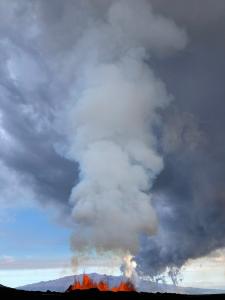
South Africa, India and Australia shared similar volcanic activity 3.5 billion years ago
Ancient volcanism dating back to 3.5 billion years ago are common to Archaean cratons of South Africa, India, and Australia
JOHANNESBURG , GAUTENG, SOUTH AFRICA, June 8, 2023/EINPresswire.com/ -- Cratons are pieces of ancient continents that formed several billions of years ago. Their study provides a window as to how processes within and on the surface of Earth operated in the past. Cratons preserve relics of our young Earth as they host a variety of rock assemblages such as greenstones and granites. Greenstones are rock assemblages that primarily comprise of sub-marine volcanic rocks with minor sedimentary rocks. They are the best archives to study early Earth surface processes. A new study published in Precambrian Research by a team of researchers, led by Dr Jaganmoy Jodder of the University of the Witwatersrand’s Evolutionary Studies Institute shows that the Singhbhum Craton in India hosts remarkably well preserved volcanic and sedimentary rocks as old as 3.5 billion years, and that it has similar geologic history to parts of South Africa and Australia.The team that included researchers from the University of the Witwatersrand (Wits University), University of Johannesburg (UJ) and Chinese Academy of Sciences, Beijing, examined volcanic and sedimentary rocks from the Daitari greenstone belt in the Singhbhum Craton of India that were formed approximately 3.5 billion years ago. Jodder and his co-workers conducted detailed field-based studies and precise Uranium-Lead (U-Pb) radiometric-age dating to evaluate the geology of the ancient greenstone rocks. Based on their study, the researchers established key geological timelines that illustrate the tectonic evolution of the Daitari greenstones.
“The Daitari greenstone belt shares a similar geologic make-up when compared to the greenstones exposed in the Barberton and Nondweni areas of South Africa and those from the Pilbara Craton of north-western Australia,” says Jodder.
Sub-marine volcanic eruptions were common between 3.5 and 3.3 billion-years-ago, which are largely preserved as pillowed lava within the greenstones of the Singhbhum, Kaapvaal and Pilbara cratons. More importantly the style of volcanism decoded from the silicic rocks provide evidence for explosive sub-marine to sub-aerial settings.
“Following silicic volcanism, sedimentary rocks that comprise sub-marine turbidity current deposits formed upon drowning of the volcanic vent. This provided us with an age estimate for the sub-marine sedimentary rocks that got deposited approximately 3.5 billion years ago, which was based on precise detrital U-Pb zircon data.”
Studies of ancient greenstones are important not only to understand the diverse volcanic processes but well-preserved greenstones preserve minor sedimentary rocks that formed under sub-marine settings.
“These volcano-sedimentary rocks provide clues related to habitable environments on the young Earth and can be regarded as time capsules to help us better understand the evolutionary tale of the planet in its early stages,” says Jodder.
Jodder and the team of researchers propose that these ancient continents may have been subjected to geologically similar processes 3.5 billion years ago.
“However, we are not certain about their palaeo-geographic positioning. And thus, cannot validate that they once formed part of a supercontinent,” says Jodder.
“The current research has led to a broader understanding of the ancient volcano-sedimentary rocks exposed in the Daitari area in India. This study resulted in unique recognition of felsic magmatic processes that are common to the Archaean cratons of India, South Africa and Australia respectively during the Palaeoarchaean times. It opens up newer avenues for research on early Earth processes,” says Jodder.
Shirona Patel
UNIVERSITY OF THE WITWATERSRAND
+27747091028 ext.
email us here
Distribution channels: Agriculture, Farming & Forestry Industry, Education, Environment, Natural Disasters, Science
Legal Disclaimer:
EIN Presswire provides this news content "as is" without warranty of any kind. We do not accept any responsibility or liability for the accuracy, content, images, videos, licenses, completeness, legality, or reliability of the information contained in this article. If you have any complaints or copyright issues related to this article, kindly contact the author above.
Submit your press release

